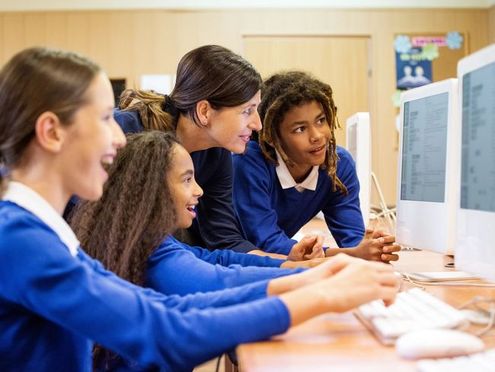In the 1980s, some Italian neuroscientists at the University of Parma were running some tests on an area of some macaques’ brains. They discovered, quite by chance, that when the scientists reached for a peanut to give to the monkeys, the neurons in the monkeys’ brains would fire. Even more surprisingly, they realised that the SAME neurons would start to fire when the monkey itself grasped the peanut. They called their discovery ‘mirror neurons.’
Obviously, the next step was to see whether the same was true of humans. Christian Keysers, a psychologist from the Netherlands investigated just that question. He wanted to explore the emotion of disgust. The brain activity of 14 male participants was monitored as everyone inhaled a noxious odour. Their brains were also imaged as they watched a video of an actor screwing up his face in great disgust. In both cases, "a particular segment of an olfactory area of the participants’ brains called the anterior insula" was activated. Whether ‘mirror neurons’ exist in human brains is yet to be proven, but such studies might suggest that empathy is a neurological response.
In a similar experiment, this time with men and women, tactile empathy was measured. All participants were touched in the same part of their leg with a feather duster. All participants then watched a video of someone being touched on the leg with a feather duster. In both cases, the same area of the somatosensory cortex was activated. As neuroscientist Vittorio Gallese suggests, “This neural mechanism is involuntary and automatic."
We don’t have to think about what other people are doing or feeling - we simply know.
So what has all this got to do with literacy improvement? It’s all about the boys.
The research behind boys and reading
Professor Keith Topping and his team at the University of Dundee recently released a research paper that is fairly damning about boys’ reading. It suggests that not only do boys read less, they also read less accurately and less thoroughly. As a result, their comprehension is worse: one possible, glaringly obvious reason behind the gender achievement gap.
Yet nobody seems to have offered a viable solution as to why boys struggle with reading more than girls. The only argument I come across time and again is that girls are more ‘empathetic’ than boys and consequently enjoy reading more, because they engage more emotionally with the characters. This idea seems to be a social construct. Research suggests that women self-identify as ‘empathetic’ more than men, but in testing don’t show any more empathy than their male counterparts. The research mentioned above shows no disparity in response between male and female brains.
This is key for schools. It’s easy to make sweeping judgments about boys’ reading, but assumptions like the one above do nothing to solve the problem.
So what can schools do to try and narrow the gender reading gap? Here are 4 top tips to remember.
1. Talk to boys about books
In the National Literacy Trust’s Boys’ Reading Commission Report, Emily Tudor said it best:
“The key to boys’ literacy is talk. We must have high expectations of boys when it comes to discussing emotional responses to text. Speaking must be planned for in the majority of lessons. With a greater impetus on talk, it becomes the norm and peer pressure amongst boys becomes less of an issue.”
And, as supported by the research above, there is no reason boys should be less able to do this than girls. By always foregrounding learners’ emotional responses to text, reading becomes more personal, less of an obligation and, hopefully, more enjoyable.
2. Choose reading material wisely
The tragic demise of local libraries and knowledgeable librarians means that the teacher’s role in helping guide learners to their favourite books is more important than ever.
How many children’s books do you read a term? One of my colleagues has decided her professional development target this year will be to read at least one KS3/KS4 level book each week, in a bid to be able to support learners' choices. This will hopefully enable her to encourage her male charges to read around their interests and develop their enjoyment of reading.
3. Be disruptive!
Boys’ reading has long been afflicted by a belief that reading is somehow a feminine activity. Traditionally, male success has been measured in terms other than academic achievement, so it is vital that schools recognise male success in reading, as much as in any other field.
In order for this to happen, reading needs to be given a positive social context - it cannot be used as a punishment. In so many schools, children in detention are told to read in silence and consequently; reading is afflicted with all the negative connotations of ‘detention.’ But reading is not a punishment - it is the foundation of academic achievement, and something to be rewarded academically and socially.
And this has to extend beyond the school gates! Encourage parents to disrupt their status quo as well. Research suggests that girls are taken to libraries or bookshops more than boys, that mothers take charge of reading at home more than fathers. As a school, encourage fathers and male guardians to read.
One of my colleagues has started a ‘Lads and Dads’ breakfast club where fathers and sons sit, enjoy breakfast and discuss books they were reading. The outcome was incredibly positive.
But... don't forget the girls!
The National Literacy Trust suggested in their 2012 report that the way in which a school addresses the underperformance of boys in reading should be seen as the litmus test of their commitment to helping all underachieving groups, not just the boys. Girls rarely, if ever, fall in to that category; it is a very real fear that quiet and well-behaved girls go under the radar if they struggle with their reading.
However, an effective reading policy, whether it is developed with boosting boys or not, should have universal benefits. Creating a structured, consistent literacy improvement strategy benefits every learner in your school.




